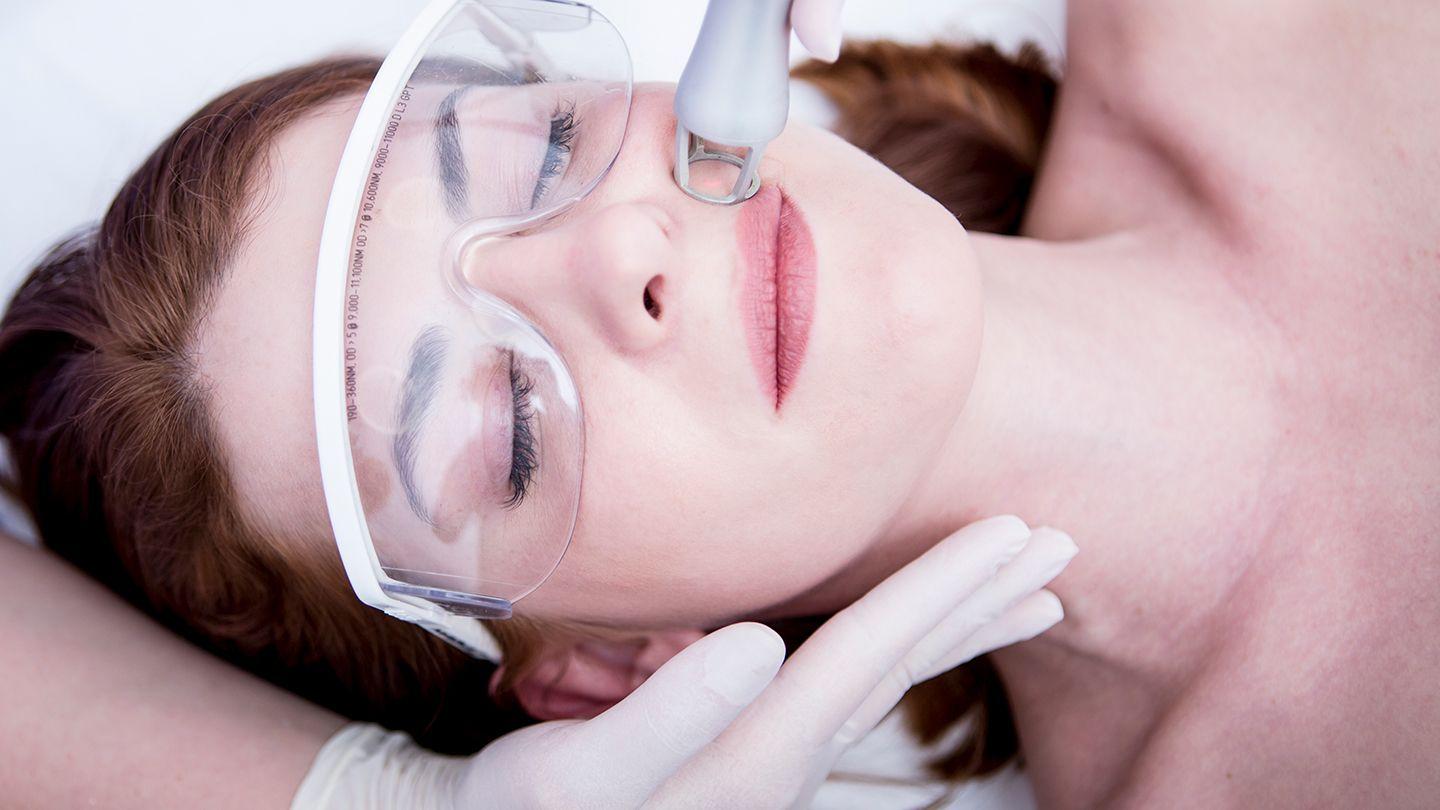In the evolving world of beauty and self-care, laser hair removal has risen as a beacon of promise for those seeking smooth, hair-free skin. Yet, as with any revolutionary technology, every zap of the laser brings with it a host of new questions and quandaries. Welcome to the world of post-laser hair dilemmas, a landscape where the yearning for perfection meets the everyday challenge of maintenance. In this arena, a simple act like trimming surfaces as a potential hero or perhaps, an unsung villain. Join us as we explore the intriguing territory of managing regrowth, debunking myths, and determining if the humble trimming tool might just be the answer to your post-laser conundrums.
Understanding Post-Laser Hair Growth Cycles
After undergoing laser hair removal, understanding the natural growth cycles of hair is crucial to managing your expectations and deciding on post-treatment care. Hair grows in different stages, and laser treatment targets these phases to maximize efficacy. However, it’s not a one-and-done process. Knowing what to expect can help you figure out if trimming is a good solution during the interim phases of hair growth.
Anagen Phase
This is the active growth phase where hair follicles are producing new hairs. Laser treatments are most effective during this phase. Expect some initial regrowth as not all hairs will be in the anagen phase during your first session. This regrowth can be sparse and patchy, which might prompt you to consider trimming to maintain a uniform appearance.
Catagen Phase
Also known as the transitional phase, this stage sees the hair follicle shrink and detaching from the dermal papilla. Trimming at this stage won’t affect the efficacy of subsequent laser treatments but can help manage the appearance of hair, making it less noticeable. If your goal is to achieve a smooth look without additional shaving or waxing, a gentle trim can maintain your desired aesthetic.
Telogen Phase
During the resting phase, the hair is fully detached and will eventually shed naturally. Some clients mistake this shedding for new growth. Understanding that this is a normal part of the cycle can alleviate unnecessary stress. Trimming during this phase can help you avoid the prickly feeling of shedding hair stubs and keep the treated area looking neat.
| Hair Growth Phase | Laser Effectiveness | Trimming Recommendation |
|---|---|---|
| Anagen | High | Optional |
| Catagen | Moderate | Optional |
| Telogen | Low | Optional |

Evaluating Trimming as a Safe Post-Laser Practice
Laser hair removal has revolutionized the beauty industry, offering a semi-permanent solution to unwanted hair. However, it raises the question of how to manage regrowth in a way that complements the treatment. One popular method under consideration is trimming.
Benefits of Trimming Post-Laser
- Non-Invasive: Unlike other hair removal methods, trimming doesn’t disturb the skin or follicles, making it a safe choice post-laser.
- Precision: Trimming allows for meticulous control, enabling you to maintain a neat appearance without the risk of over-cutting.
- Time Efficient: Quick and straightforward, trimming can easily fit into your daily routine without unnecessary hassle.
Potential Risks and Considerations
| Factor | Consideration |
|---|---|
| Skin Sensitivity | Recent laser treatments can make skin more sensitive; gentle handling is essential. |
| Equipment Hygiene | Always use sanitized tools to avoid infections or skin irritations. |
It’s essential to wait a few days post-laser treatment before you start trimming. This allows your skin to settle, minimizes irritation, and reduces the possibility of adverse reactions. Implementing a weekly trimming routine, instead of daily, helps in managing hair regrowth without causing undue stress on the treated areas.
Trimming post-laser can be a practical approach if done with care and consistency. The key is to respect your skin’s healing process and opt for high-quality, sanitized equipment. Consider this harmonious technique for a smooth transition between your laser sessions.

Balancing Aesthetics and Skin Health After Laser Treatments
After undergoing laser hair removal, the desire to maintain a pleasing aesthetic can sometimes overshadow the need to prioritize skin health. Post-treatment, your skin is particularly sensitive, requiring a finesse that balances both beauty and well-being. This can feel like walking a fine line, especially when the results of the laser treatment start to manifest, and stray hairs become apparent.
Key points to keep in mind:
- Avoid excessive exfoliation to prevent irritation.
- Use fragrance-free moisturizers to soothe your skin.
- Stay on top of sun protection to avoid pigmentation issues.
Trimming: A Gentle Option
Turning to trimming might be a significant relief. It’s less aggressive than shaving and avoids the risk of ingrown hairs that can occur with waxing. A good pair of hair-cutting scissors or an electric trimmer set to an appropriate length can help keep things tidy without compromising the skin’s healing process. Remember, the root structure of the hair remains altered due to the laser treatment, meaning trimmed regrowth may be softer and less noticeable.
| Technique | Pros | Cons |
|---|---|---|
| Trimming |
|
|
Balancing skin health and maintaining aesthetics post-laser treatment involves cautious choices and attentive care. Don’t shy away from seeking professional advice tailored to your skin type, and consider that less can often be more when dealing with post-treatment skin. The goal is to embrace patience and sensitivity, ensuring that both your skin and your aesthetic preferences are treated with equal respect.

Expert Tips for Effective Post-Laser Grooming
Post-laser hair treatments can leave your skin feeling sensitive, but that doesn’t mean you can’t still maintain your grooming habits. To navigate this delicate period, consider adopting some expert tips to ensure effective and safe post-laser grooming. A few adjustments to your regime can help you achieve the best results.
- Hydrate and Soothe: Keeping your skin hydrated is essential. Opt for fragrance-free moisturizers and soothing gels like aloe vera or calendula. These products will help to keep the treated area moisturized without causing irritation.
- Avoid Heat: Post-laser skin is particularly sensitive to heat. Refrain from hot showers, saunas, and direct sunlight exposure. If you have to step out, use a broad-spectrum sunscreen to protect your skin.
- Be Gentle: Gentle care is key. Steer clear of exfoliating scrubs and harsh chemicals. Using mild, unscented cleansers will help maintain the integrity of your skin barrier.
One common dilemma is how to manage the regrowth without compromising the laser treatment’s effectiveness. Trimming could be the answer. Unlike shaving, which can aggravate sensitive skin, trimming keeps the hair short without causing irritation. But what tools should you use and what techniques are best? Let’s explore.
| Tool | Best Features |
|---|---|
| Electric Trimmer | Adjustable length settings, gentle on sensitive skin |
| Small Scissors | Precision control, minimal skin contact |
Using an electric trimmer with adjustable settings allows you to control the length without causing skin trauma. Always disinfect your tools before and after each use. If you’re handier with scissors, ensure they are specifically designed for grooming and have rounded tips to prevent accidental nicks.

Choosing the Right Tools for Post-Laser Hair Maintenance
Selecting the right post-laser hair removal tools is essential for maintaining smooth, hassle-free results. While there are many products on the market, not all are created equal. Focus on finding high-quality items designed to complement laser treatments. Consider tools like specialized trimmers, exfoliating gloves, and gentle moisturizers. These will help you maintain your skin’s health and hair reduction results without causing irritation or damage.
<ul>
<li>Specialized Trimmers: Opt for trimmers that are designed specifically for sensitive skin areas, which help manage regrowth gently without affecting laser-treated skin. Look for features like adjustable length settings and hypoallergenic blades.</li>
<li>Exfoliating Gloves: Regular exfoliation can prevent ingrown hairs post-laser. Choose gloves that offer a balance of effective exfoliation while being soft enough for sensitive skin.</li>
<li>Gentle Moisturizers: Hydration is key. Use products that contain calming ingredients like aloe vera or chamomile to soothe the skin and enhance the healing process.</li>
</ul>
<div style="overflow-x:auto;">
<table class="wp-block-table is-style-stripes">
<thead>
<tr>
<th>Tool</th>
<th>Features</th>
</tr>
</thead>
<tbody>
<tr>
<td>Specialized Trimmer</td>
<td>Hypoallergenic blades, adjustable settings</td>
</tr>
<tr>
<td>Exfoliating Gloves</td>
<td>Soft texture, effective exfoliation</td>
</tr>
<tr>
<td>Gentle Moisturizer</td>
<td>Aloe vera, chamomile, hydrating effects</td>
</tr>
</tbody>
</table>
</div>
Understanding that each body is unique, it's important to customize your routine to match your personal needs. For instance, someone with sensitive skin might benefit more from silicone-based exfoliating tools over traditional exfoliating gloves. Similarly, those prone to dryness should prioritize deeply hydrating creams to complement their laser treatments. The goal is to keep the skin nourished and free from irritation, thus enhancing the results you’ve invested in.
Regular maintenance using the right tools can maximize your post-laser experience. By investing time in this regimen, not only will you preserve the outcomes of your laser sessions, but you'll also ensure your skin remains healthy and radiant. From choosing the perfect trimmer to maintaining optimal hydration, every tool plays a vital role in achieving and maintaining smooth, hair-free skin.
Q&A
Post-Laser Hair Dilemmas: Is Trimming the Answer?
Q: What are the common post-laser hair removal concerns?
A: After undergoing laser hair removal, many people experience a range of concerns including redness, swelling, sensitivity, and a lingering presence of fine or stubborn hairs. These residual hairs can cause frustration, as the expectation is often complete hairlessness.
Q: Why might trimming be considered as a solution to these concerns?
A: Trimming can be a practical compromise for managing the leftover fine hairs without exacerbating skin irritation. Unlike shaving or waxing, trimming avoids direct contact with the skin which can be particularly sensitive post-laser treatment and reduces the risk of ingrown hairs.
Q: Is it safe to trim hair immediately after laser treatment?
A: Generally, it’s advisable to wait at least a week post-treatment before using any tools on the treated area. The skin needs time to heal, and jumping straight into trimming might irritate sensitive skin or disrupt the laser’s work. Once the skin has calmed down, trimming with sterilized tools can be a safe method to manage hair length.
Q: What tools are ideal for trimming post-laser hair?
A: Opt for stainless steel scissors or electric trimmers with adjustable guards. The scissors offer precise control, especially for small areas, while the trimmers ensure even results with minimal risk of skin contact. Always ensure your tools are clean to prevent infection.
Q: Could trimming affect the overall results of laser hair removal?
A: Trimming does not interfere with the laser hair removal process, as it only shortens the hair. In contrast, shaving and waxing can sometimes disrupt the cycle of hair growth, which is crucial to the effectiveness of laser treatments. Therefore, trimming is a neutral action.
Q: How does one maintain the results of laser hair removal in the long term with trimming?
A: Consistent and cautious trimming maintains a tidy appearance while respecting the laser treatment’s effectiveness. Continue with any scheduled laser sessions and follow professional advice regarding aftercare. Moisturize the skin regularly and avoid excessive sun exposure to preserve the results.
Q: Are there any alternatives to trimming for managing post-laser hair?
A: Alternatives include using depilatory creams specifically designed for sensitive skin or considering another round of laser treatment for stubborn areas. Consulting with your dermatologist can provide tailored advice and additional options based on your skin type and hair regrowth pattern.
Q: What’s the final verdict on trimming as a post-laser hair care method?
A: Trimming emerges as a sensible and safe solution for maintaining the aesthetic goals of laser hair removal. It’s minimally invasive, respects the delicate post-treatment phase, and offers a tidy appearance without compromising the long-term benefits of laser treatments.
For those navigating the intricate journey of achieving smooth skin via laser treatment, trimming might just be the practical answer to post-laser hair dilemmas.
Future Outlook
As the beams of the laser fade and the echoes of the machine’s hum grow distant, the post-hair removal journey marches on, brimming with questions and curiosities. Whether it’s the precision of trimming or the freedom of letting nature take its course, the choice ultimately rests in the hands that glide through the aftercare. From embracing the texture of regrowth to exploring the sleekness of a trim, the road ahead is packed with personal decisions as unique as the follicles themselves.
the real beauty lies not merely in the method chosen but in the confidence that frames each step. The dialogue surrounding these post-laser hair dilemmas is just beginning, inviting us all to share, listen, and perhaps even redefine what it means to care for our skin. Whether scissors or serenity guide your hand, may your path be illuminated by self-assurance and discovery.
And so, dear reader, as you stand on the cusp of aftercare choices, remember that this journey is just as much about finding comfort in your own skin as it is about aesthetics. The next chapter is, quite literally, in your hands.






